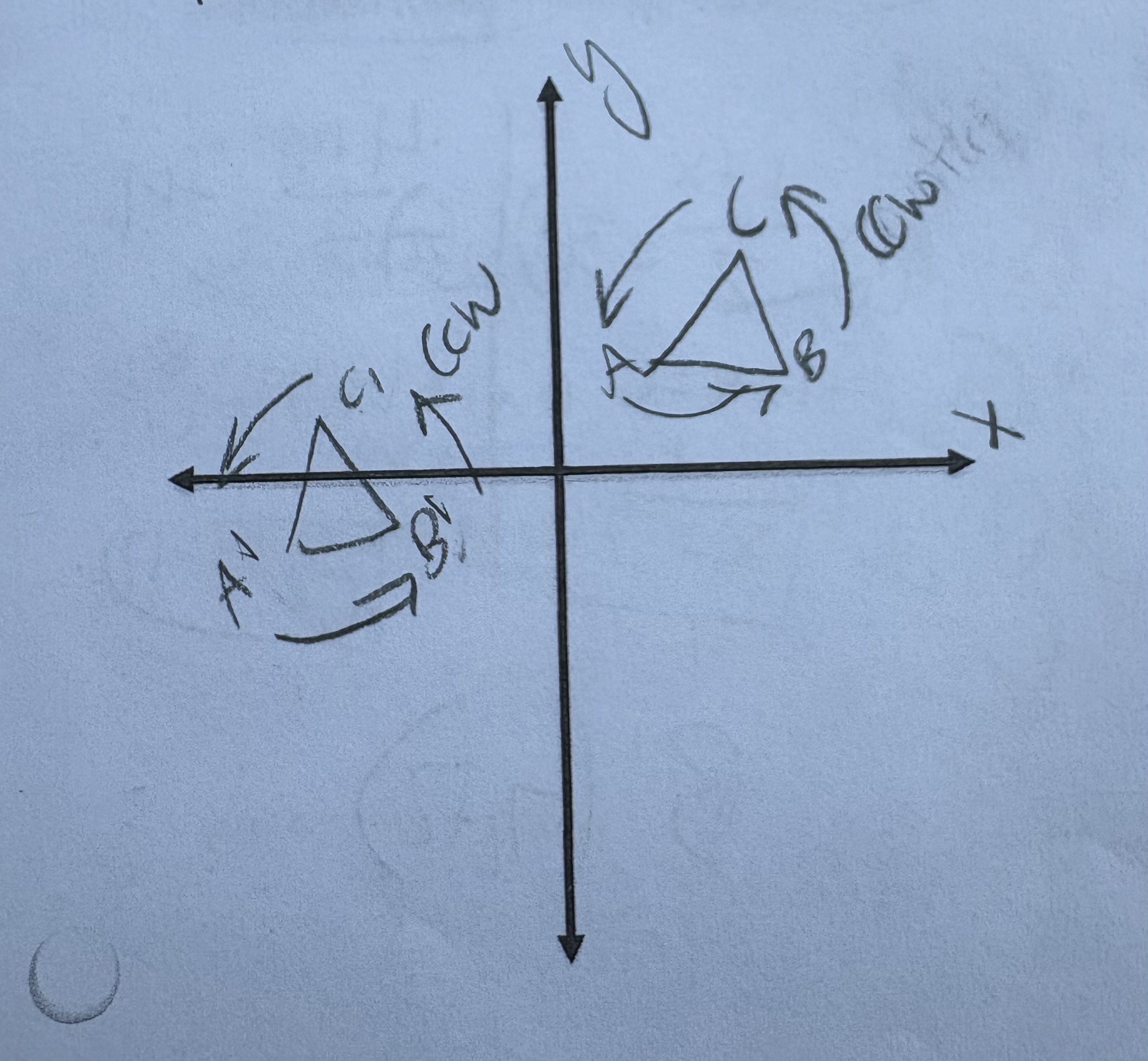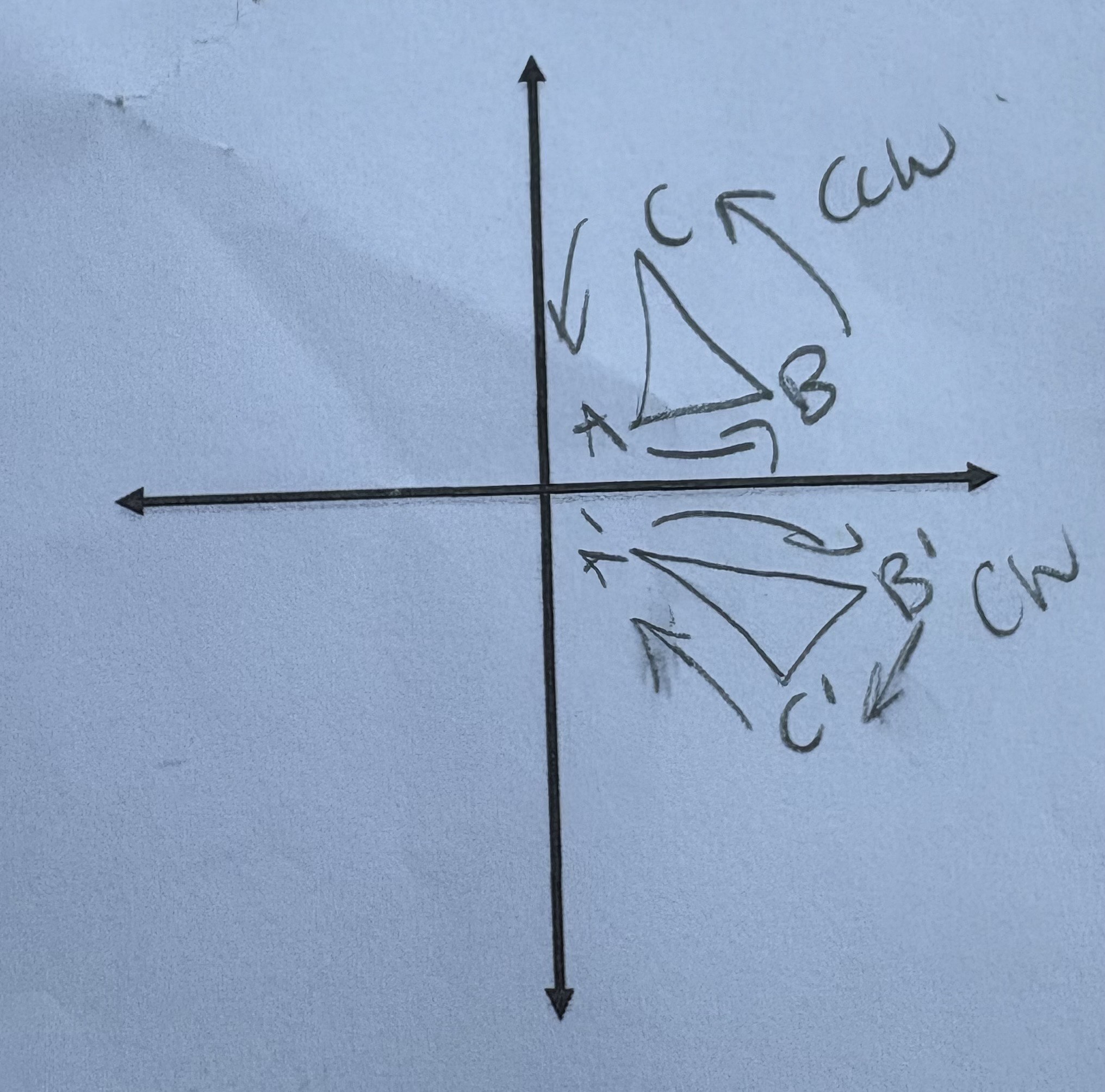Geometry: Translations, dilations, symmetry, rotations, and reflections.
1/85
There's no tags or description
Looks like no tags are added yet.
Name | Mastery | Learn | Test | Matching | Spaced |
|---|
No study sessions yet.
86 Terms
Translation
When the position of an object is changed
Translations Rule
Changes the position of an object
A translation is always _______.
addition
The box next to a T of translation houses what?
The coordinates you translate by
Dilation
A figure is either enlarged or reduced by a scale factor of K
If K > 1, a dilation is an ________.
enlargement
If 0 < K < 1, a dilation is a _______.
reduction
Dilations rule
Enlarges or reduces the object
A dilation is always ________.
multiplication
D2 as a dilation means
Enlargement
D1/2 as a dilation means
reduction
The k in Dk in a dilation is
what to dilate by
Line symmetry
When an object can be folded onto itself
Rotational symmetry
When the object can be rotated onto itself after less that a full term.
To find the rotational symmetry, what’s the equation?
360/n
Point symmetry
When the object can be rotated onto itself after a half turn (180 degrees)
Rotation (turn)
A figure is moved about a fixed point called a rotation center
The box right next to an R means in a rotation
the degrees you rotate by
90 degrees is a ______ turn.
1/4
180 degrees is a ______ turn.
1/2
270 degrees is a _____ turn.
3/4
Letters that are different than the original have a small roman numeral in the ____ ______ corner of them.
top right
Rotation rules
Figure is turned about a fixed point
In a rotation about the origin, the original image turns ________ (___).
counterclockwise, (CCW)
90 degrees turn (270 degrees CW) ——- Rotation
(-y, x)
180 degrees turn (180 CW) ——- Rotation
(-x, -y)
270 degrees turn (90 degrees CW) ——- Rotation
(y, -x)
Origin ——- Rotation
(-x, -y)
Reflection (flip)
Mirror image of a figure or point
Glide reflection
Consists of a line reflection and translation (combination of 2 transformations)
The box next to an r in a glide reflection is
what to reflect over
Reflection rules
Mirror image of a figure or point
Over x-axis ———Reflection
(x, -y)
Over y-axis ———Reflection
(-x, y)
Over y = x ———Reflection
(y, x)
Over origin ———Reflection
(-x, -y)
Over y = -x ———Reflection
(-y, -x)
Reflecting over a point
The point you are reflecting over becomes the midpoint
What equation do you use to reflect over a point?
The midpoint formula
What number is to the right side of the = in the midpoint formula when solving?
The rbox numbers
Composition Transformations
Combination of 2 or more transformations
In Composition Transformations, you read them _____ to ______.
right, left
Isometries/Rigid Motions
A transformation that preserves distance
All transformations are _____/____ _______ except Dilations because it changes size and distance between points.
Isometries/Rigid Motions
Direct Isometry
An isometry that preserves the order (orientation) of the vertices
Opposite Isometry
An isometry that changes the order (operation) of the vertices
Orientation for Direct Isometry
Orientation preserved
Order the same
Same direction as arrows
Orientation for Opposite Isometry
Orientation is NOT preserved
Order not the same
Different directions of arrows

What does this image represent?
A Direct Isometry

What does this image represent?
An Opposite Isometry
Isometries move figures to new location without
altering their size or shape.
Isometries _______ _______ between points.
“preserve distance”
Isometries _____ _______ between points.
“maintain congruence”
y = b is a line parallel to the __ ______ and intersects the __ _____ at b.
x-axis, y-axis
Y = b graphs a _______ _____.
horizontal line
x = a is a line parallel to the ___ _____ and intersects the __ _____ at a.
y-axis, x-axis
X = a graphs a _____ ________.
vertical line
reflect the line x = -7 over x = -2. What is the equation of the image of x = -7?
x = 3
A line that doesn’t carry a shape onto itself _____ the shape but doesn’t let the shape _____ onto itself.
flips, fold
Parallelograms have opposite ______ congruent.
sides
Parallelograms have opposite _____ parallel.
sides
Parallelograms have opposite ______ congruent.
angles
Parallelograms’ _______ bisect each other.
diagonals
Parallelograms’ consecutive angles are _______.
supplementary
A ______ divides a parallelogram into 2 ______ triangles.
diagonal, congruent
True or False: A rectangle is a parallelogram.
True
A rectangles has all angles ______.
congruent
All angles of a rectangle are ______ angles.
right
The _______ of a rectangle are congruent.
diagonals
True or False: A rhombus is a parallelogram.
True
All the _____ of a rhombus are congruent.
sides
The ______ of a rhombus bisect angles.
diagonals
The _______ of a rhombus are perpendicular to each other.
diagonals
True or False: A square is a parallelogram.
True
All ______ of a square are congruent.
angles
All angles of a square are ______ angles.
right
The ______ of a square are congruent.
diagonals
All sides of a square are ______.
congruent
The diagonals of a square _____ each other.
bisect
The diagonals of a square are __________ to each other.
perpendicular
A trapezoid has _____ pair of parallel sides.
one
An isosceles trapezoid has one pair of ______ parallel sides not ________.
opposite, congruent
An isosceles trapezoid has one pair of opposite ______ sides that aren’t _________.
congruent, parallel
The diagonals of isosceles trapezoids are _______.
congruent
The base angles of isosceles trapezoids are _______.
congruent
The opposite angles of isosceles trapezoids are _________.
supplementary